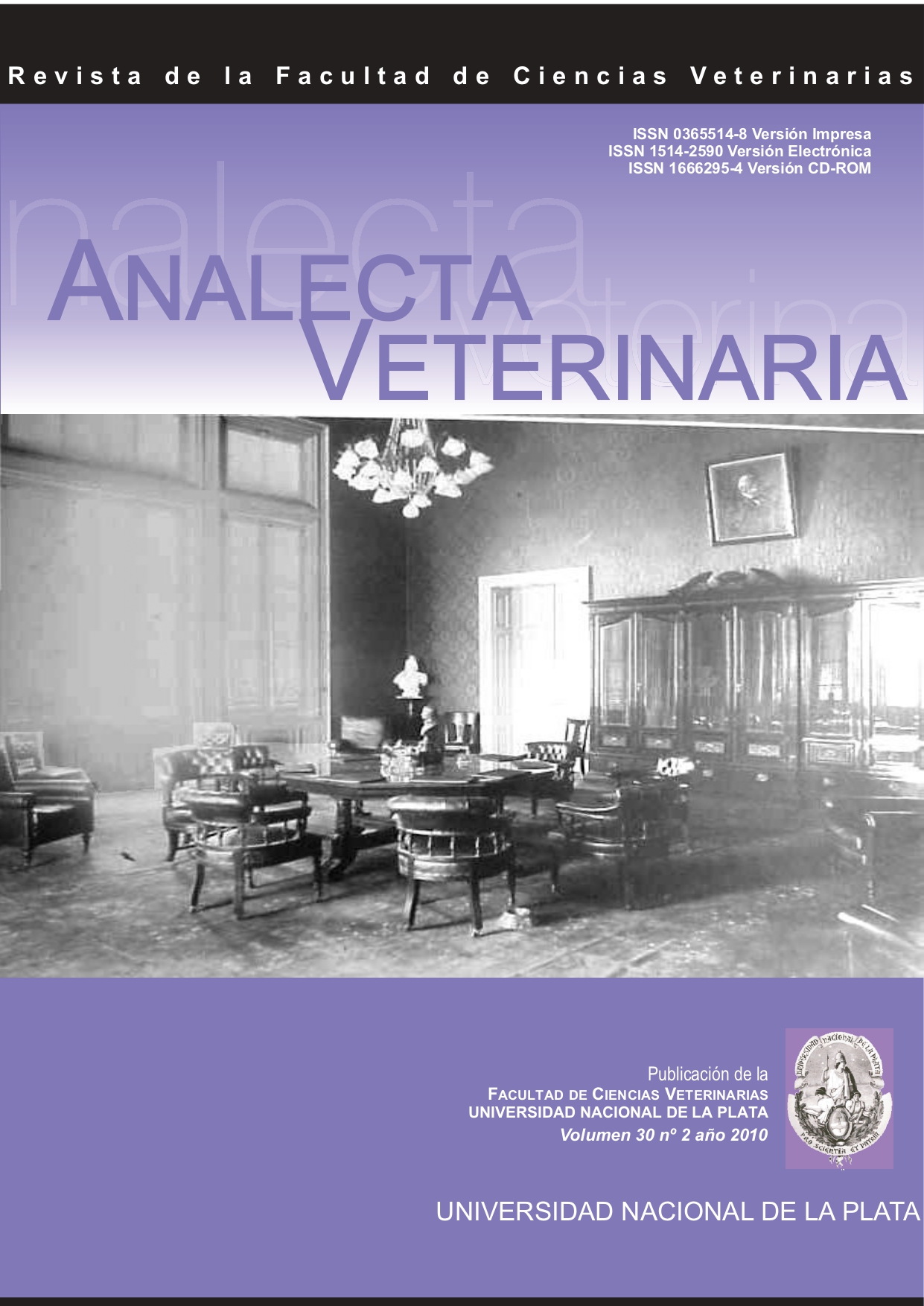Estudio sobre la enfermedad de Tyzzer (<i>Clostridium piliforme</i>) en diferentes cepas de ratas y ratones de laboratorio infectadas experimentalmente
Resumen
Los animales de laboratorio, como reactivos biológicos vivos, deben ser estandarizados genética y microbiológicamente, para que los resultados de las experiencias sean confiables, reproducibles y comparables. El uso de animales en estado de salud deficiente conduce irreversiblemente a la obtención de resultados erróneos. Clostridium piliforme es el agente productor de la enfermedad de Tyzzer y hasta el momento se desconocía la susceptibilidad o resistencia a este agente en las diferentes cepas de ratas y ratones. En este trabajo se evaluó, utilizando inoculaciones experimentales, la resistencia y/o susceptibilidad al Clostridium piliforme en las diferentes cepas de ratas y ratones de Argentina; se estableció la concentración de microorganismos requerida para producir la morbilidad, pero no la mortalidad; se confirmaron las propiedades biológicas del Clostridium piliforme y se determinó el grado de protección brindado por los anticuerpos producidos en animales inoculados con diferentes concentraciones del microorganismo. Se observó que Clostridium piliforme es igualmente patógeno para ambas especies y cepas con algunas diferencias en las lesiones encontradas. Se determinó que la dosis de 2x105 y 2x106 microorganismos no enfermó a los animales, estimuló a la producción de los anticuerpos y protegió contra una descarga de dosis letal, por lo que se puede considerar que estas dosis pueden ser utilizadas para proteger a los animales de una colonia.Descargas
Publicado
Cómo citar
Número
Sección
Licencia
Los autores/as conservan los derechos de autor y ceden a la revista el derecho de la primera publicación, con el trabajo registrado con la licencia de atribución de Creative Commons, que permite a terceros utilizar lo publicado siempre que mencionen la autoría del trabajo y a la primera publicación en esta revista.

Analecta Veterinaria por Facultad de Ciencias Veterinarias se distribuye bajo una Licencia Creative Commons Atribución-NoComercial-SinDerivar 4.0 Internacional.



























